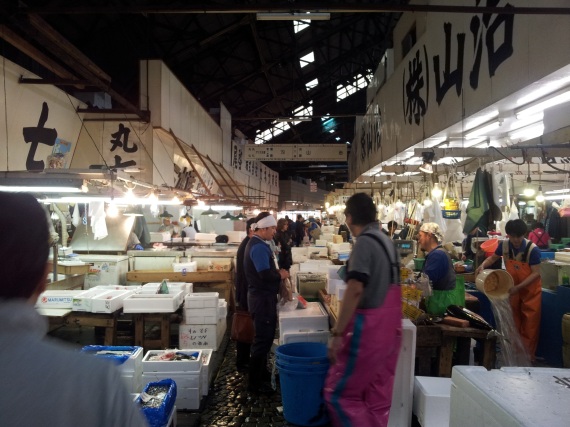It is good experience to not have a clue as to what is going on around you. No doubt, many who have worked with with me over the last 25 years would say that I do this all too regularly. In Japan, you can’t help not knowing what’s going on. You can’t understand the language and they just do lots of things differently here.
Let’s just take a few examples:
On the Tokyo underground network (the lines of which incidentally don’t connect and whose ticket purchasing system largely follows the english rail model), there is often little English. So this morning we were trying to get to some remote part of Tokyo where, for some reason known only to her, Lorna had booked the rental car. We needed to purchase tickets and had to work out how much money to put into the automatic machine. There was a map of the underground system in two languages: Japanese and Braille. I thought momentarily about blinding one of the kids, but decided it was probably more productive to act like Lord Carter, and translate the hieroglyphics. As you can see from the partial underground map below this wasn’t straightforward.
When we descended to the station platform, we then have to work out which line/direction to take. The day before Nancy and I had jumped onto a train going the wrong way leaving Tilly and Lorna on the platform. After more hieroglyphics translation, we got on the right train. Train etiquette in Tokyo is clear. They spurn the extrovert behaviour of London tube users and play this exciting game of getting as many people into a carriage as possible and then forcing them to look in different directions. The loser is the person who catches another person in the eye. Nobody has ever lost.
The Japanese love vending machines. They are everywhere selling almost everything. The way you purchase food at many restaurants is to select the meal you want at the machine, put your money in the machine and then a piece of paper comes out with a number on it. You then wait at a hatch for your meal. The machine foxed us yesterday. The machine had great pictures, but we just could not get it to work. Today, there were others using the machine so we were able to work out what to do. The challenge was that most of the buttons had only japanese characters and those with pictures on it had all the clarity of those pictures they take of your baby while it’s still in the womb. The challenge today was that it wasn’t clear which meal was the one you had purchased. The ticket had a helpful number and letter on it, but when a meal appeared at the hatch the server not surprisingly shouted out the code in Japanese. So, you end up peering at others’ codes to get some idea of whether your meal was due.
Driving has been OK so far. Our bottom of the range Toyota comes with a top of the range Sat Nav. Sat Nav Suziki has been excellent so far. She keeps informing us about nearby attractions in Japanese, but she seems to know where she is going. I only hope that she was programmed to the correct place in the first place. Her only fault is her endless whinging. Suziki is integrated with traffic reports and there is nothing more irritating than her telling you every 3 minutes that there is heavy traffic ahead when you are gridlocked in traffic.
Lorna had planned a day of visiting shrines yesterday. Mindful of the fact that this would be about as appealing to the children as a game of sardines for Anne Frank, I changed the agenda to go to a puppy mall in a hi-tech area of Tokyo. The original plan was to rent a puppy for an hour at a puppy cafe, but unfortunately this cafe had closed. We spent time looking at shop after shop of dog clothing and pet stores; I played table tennis against a machine (and lost); and the children lost lots off money on one of those grabbing machines full of Hello Kittys.
We then went to a couple of Innovation museums. One from Toyota and the second the National Museum for Emerging Science and Innovation. The latter in particular was excellent and i would recommend it to anyone. We attended a talk in Japanese on DNA. The good news is that the Japanese for DNA is DNA; the bad news is that this was the only word that we could translate. We had explored sending the children to a school recently where part of the tuition was in a foreign language, so this was a useful demonstration of what it would be like.
So, it’s with all of this in mind that I have been reflecting on the Google glasses that have been so much in the news recently. The concept of these glasses is that they give information to the wearer. They could use Google Translate to convert any writing into your preferred language; Google Maps and Streetview to tell you where you are; and Wikipedia to inform you why it’s interesting. If someone were to invent a Babel app that translated real time what someone was saying, it could do this too. While I would miss this feeling of being lost, I think this would be a terrific feature. Imagine if you could develop so much understanding so quickly; you would understand Japan within a decade.


